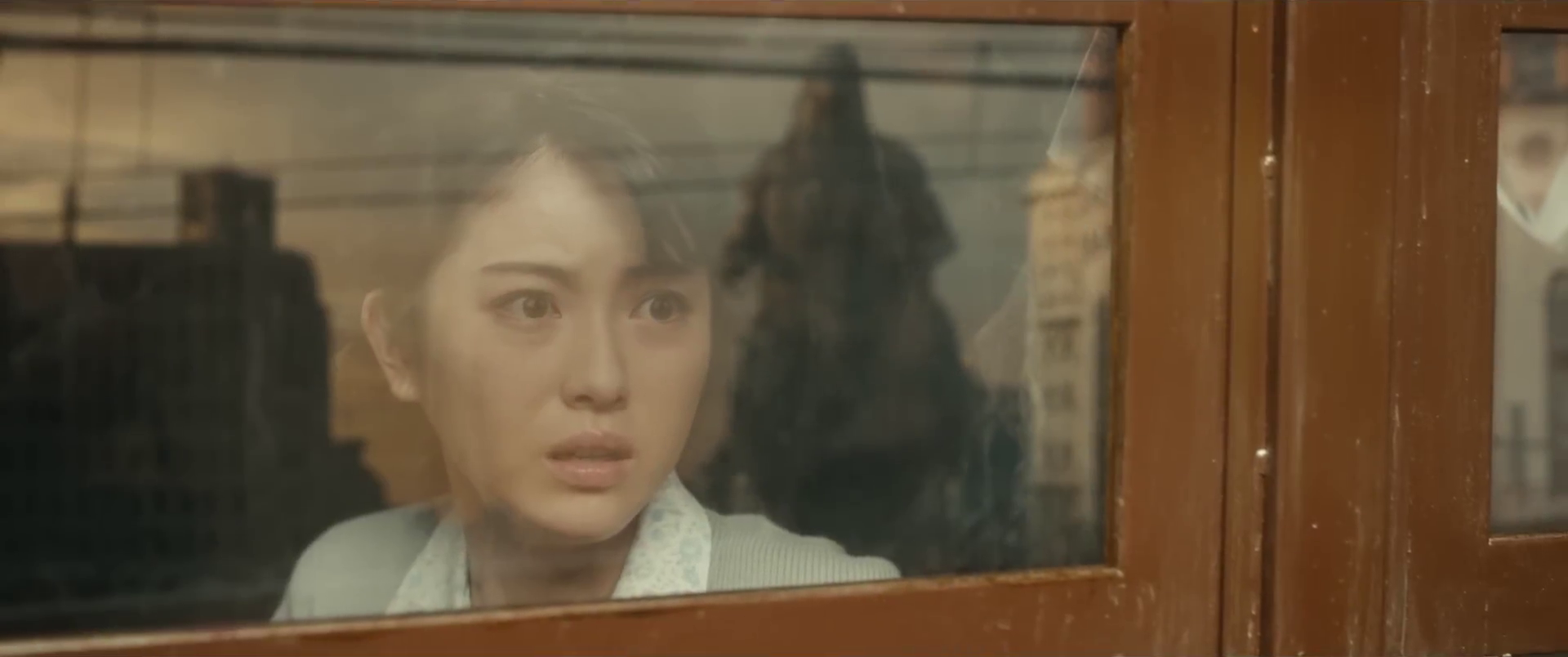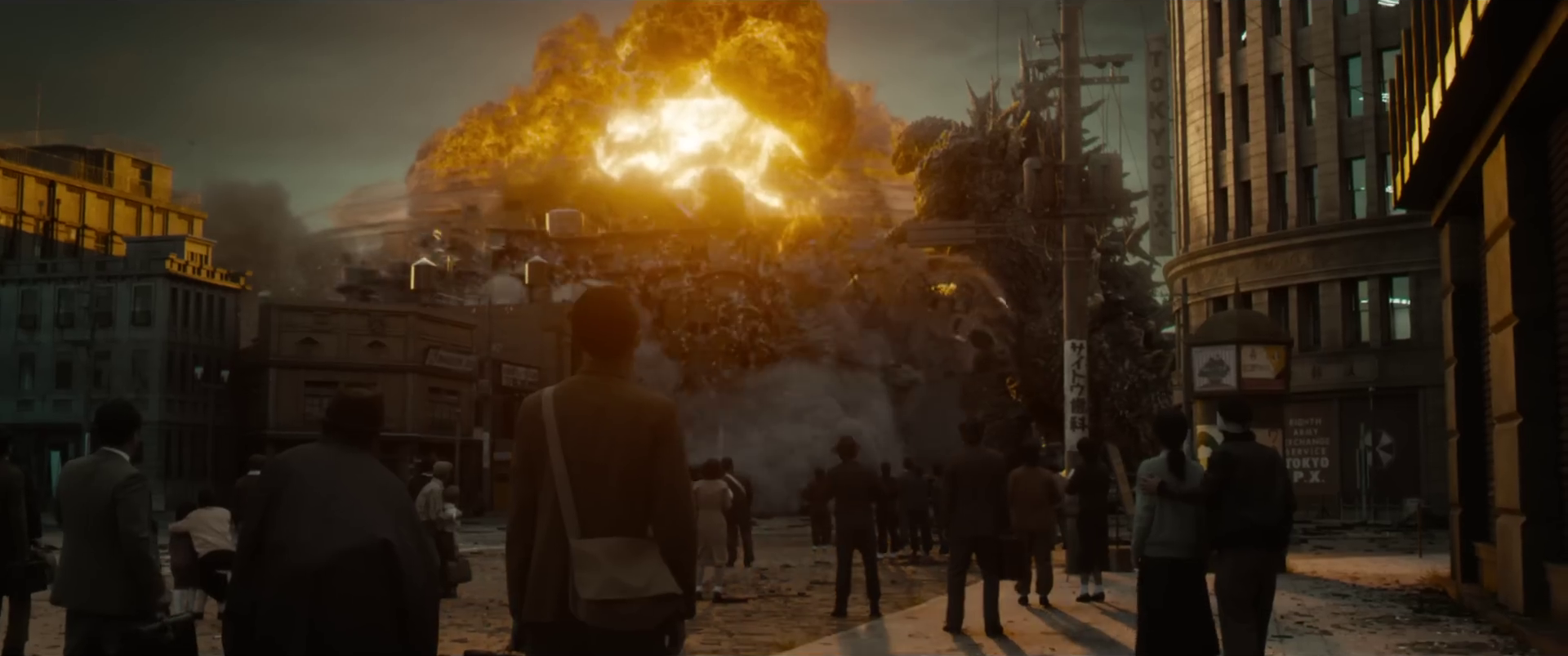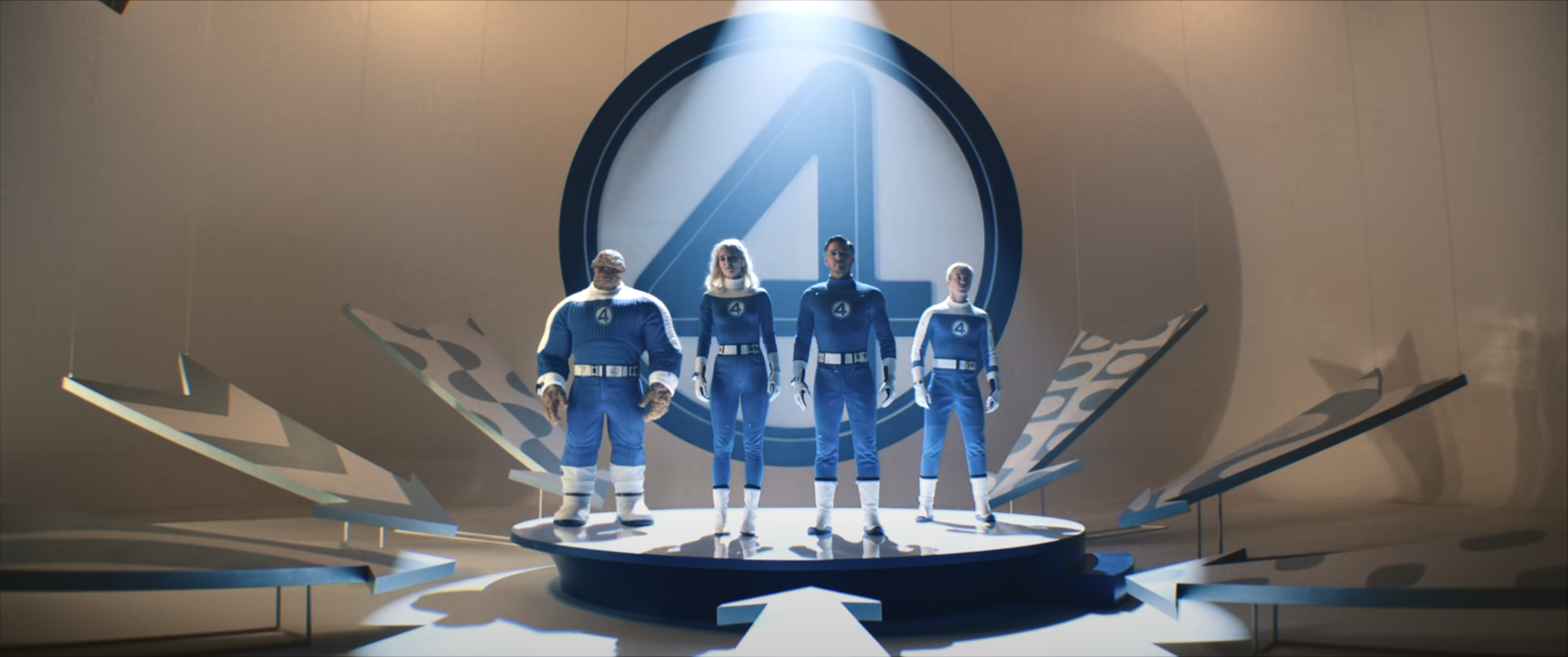Godzilla minus One
Released December 1, 2023
Written, Directed and Visual Effects by Takashi Yamazaki
* No Spoilers *
Throughout its 75 years history the Godzilla franchise has seen its share of hits and misses. Unfortunately, Hollywood has failed to capture what makes it great. These aren’t just giant monster movies that glorify destruction. Godzilla is a metaphor for the horrors of nuclear warfare and Hollywood’s desire for grandiose blockbuster spectacle has been ill suited to capture that underlying symbolism.
Godzilla Minus One, the latest film from the original Japanese studio Toho, is a reboot taking place just after World War II in a war torn Japan struggling to rebuild. This film honours the past while feeling like a mash up of the 1954 Godzilla, Christopher Nolan’s Dunkirk, and Steven Spielberg’s Jaws. A brilliant blend of a WWII period drama and one of the most intense monster movies of all time. It isn’t derivative, and melding these tonal influences creates a package that is greater than the sum of its parts.
You’d expect a movie about a giant destructive monster to come with a massive visual effects team and an equally gargantuan budget. For the most part that is true, like other Hollywood Blockbusters, the 2014 Godzilla (starring Brian Cranston) and its 2019 sequel had budgets between $160 and $200 million dollars. Their visual effects departments consisted of upwards of 1500 people. It’s what you would expect for any large scale film. Godzilla Minus One is a fantastic movie in its own right, but I was shocked to learn that it had a budget of less than $15 million dollars and a visual effects team of just 9 (nine) people (one of which was the director himself)! It’s unheard of for one person to be credited for direction, writing, and visual effects supervision, but Takahi Yamazaki somehow managed to do it all.
There are parts of this movie that look less polished than most theatrical releases, but given the limited scope and budget, this had no right looking as great as it did. There are lots of water scenes in this movie, and I couldn’t tell if they were purely CGI or shot on a sound stage with a giant pool. Regardless, the way they inserted the explosions, splashes, and Godzilla swimming though the scene was remarkable. We’re treated with plenty of wide shots of Godzilla clearly visible and largely unobscured by clouds, smoke, or debris. Godzilla is more frightening than he’s ever been. Not because he has sharper teeth or claws, but because of the perspective from which he is shown. The camera is often placed at ground level, where see his feet slam into the road with thunderous booms while the concrete spilts and erupts up into the air. It’s striking, powerful, and terrifying.
Minus One also manages to balance the screen time between human characters and Godzilla. Neither is neglected to show the other. Instead every encounter with Godzilla comes with a pivotal change for the human characters. We aren’t building toward Godzilla scenes to see the action and destruction, scenes lead into each other as tools to facilitate character growth. We have multiple encounters with the monster and each one is unique in setting, scale, or outcome. They are never stale and don’t feel as though they are there just for the sake of showing an action scene with the titular character.
My favourite scene brought back memories of Jaws, taking place at sea on a fishing boat. It was a masterclass in building tension. Too often movies will escalate in intensity but as soon the action starts, it shifts from brooding to bombastic in an instant. Thankfully this scene remains methodically sinister and drums along with a heart thumping, and slow but sinister pace. Not too long or drawn out, but a harrowing and creeping chase sequence, where the characters are just out of reach, as Godzilla continuously closes in. Seeing characters adapt to each setback and being forced to improvise is so tense and the movie does this with such perfect timing that every beat hits. It makes the triumphant payoff or brutal failure feel all the more intense. This might be one of my favourite scenes of the year!
A huge part of this tension and momentum is the music. You could tell that the filmmakers were inspired by Christopher Nolan and Hans Zimmer, using relentless stinging strings and booming brass to punctuate every moment. The movie has its share of homages to the classic Godzilla movies, including the original theme. They exercised restraint by using it sparingly and only where we get a truly epic moment for the giant monster.
Minus One’s brilliance lies in how it conveys its themes. This isn’t mindless popcorn action, nor does it fall prey to high brow pretension. Though the vibe is similar to Dunkirk in its depiction of ordinary civilians acting in service of each other, it is more earnest and genuine in its presentation. Its not afraid to be direct with its message and it felt honest and straightforward. The movie takes place during and after WWII and the impact on Japan is presented with a lot of nuance. Duty, responsibility and service are at the forefront without feeling like jingoistic nationalist propaganda. It doesn’t glamourize violence, and it depicts destruction with the regret, reverence, and weight it deserves. Godzilla is, more than ever before, the physical embodiment of the horror of warfare. It’s not a light subject and is given due respect. Godzilla’s atomic breath has a pulsating hum that escalates before the moment of destruction. When it’s finally unleashed the devastation mirrors the actual atomic bombs dropped by the United States in Hiroshima and Nagasaki. An overwhelming outward blast of force followed by a sharp inward inversion and decompression. It was terrifying. The scene also had a brief moment of “black rain” where the moisture in the air is scorched in a cloud of fire only to descend on people as a charcoal darkness of irradiated rain. The evil power of these bombs is hard to describe but if you have learned about what actually happened, it’s truly chilling. At times this was emotionally taxing to watch, especially with how the destruction also mirrors what we see occurring in our world today.
Despair in the face of an unrelenting destructive force is a hard and heavy theme but the film approaches it with so much heart and honest reflection. It speaks to the triumphant spirit of people and their will to persevere. It chastises society for how in war we “treat lives too cheaply”. The older characters reflect that they now are “not fighting to the death, but fighting to live.” Specifically for the next generation. One of the younger characters feels ashamed and left out because he never fought. He is young and naively angered that he can’t be a proud war veteran. Yet the wise survivors tell him that “not having been to war is something to be proud of”. I can only imagine how much more impactful these lines would be in their native tongue, but even subtitled and translated they were incredibly powerful.
This movie has brilliant character arcs, especially for the main protagonist, Koichi Shikishima, a kamikaze pilot plagued by survivors guilt. To him and those around him, surviving means he is a coward that should be shamed for failing to complete his mission. The way the film depicts his PTSD is remarkable, showing Shikishima blaming himself for his own cowardice, both on the battlefield and in life. He is prone to being paralyzed by his own self doubt and crippling fear. Not acting and remaining passive, living life as a helpless spectator, and only seeing what he has when it is almost taken away from him. Yet the story isn’t all depressing and solemn, it’s also about second chances and redemption. Highlighting how salvation can come through giving yourself grace, clemency, and self-respect.
All of this comes together because of Ryunosuke Kamiki’s pained and powerful performance. The acting is great, though at times it can be over the top and melodramatic by western standards, anyone who has experience with Japanese media will feel right at home. There is a lot of subtlety to the performances, especially when no words are said, and characters are also dramatic and intense when needed. This is not a criticism but I feel viewers who are new to Japanese cinema should be prepared for the stylistic differences. It may feel odd for those not used to acting styles outside of Hollywood or English language cinema.
It is so refreshing to have a Godzilla movie that lives up to the deep storytelling potential. 1998’s Godzilla starring Matthew Broderick was flat, completely missing the spirit of Godzilla. While the 2014 film was a step in the right direction it still lacked the heart I was hoping for, and subsequent sequels (see the trailer for Godzilla x Kong) seem to devolve further into flashy CGI action with little substance. Minus One isn’t perfect and there were a few narrative choices at the very end that could have been left more ambiguous, but those are just minor gripes in a excellent movie.
I can confidently say that Godzilla Minus One is the best modern Godzilla movie and is second only to the original film from 1954 in how well it captures the franchise’s underlying thematic potential. I am sure my nostalgia and love for these movies makes me a bit bias, but Godzilla Minus One stands on its own as a triumphant return, balancing homage, theme, and tension with absolute brilliance.
9/10 - An excellent surprise hit, especially because of its modest budget and small visual effects team. Yamazaki is a genius and I will definitely be adding this to my Blu-ray collection as soon as it is available.










A spoiler-free review of Benny Safdie’s documentary-style biopic about mixed martial artist Mark Kerr, starring Dwayne “The Rock” Johnson and Emily Blunt.